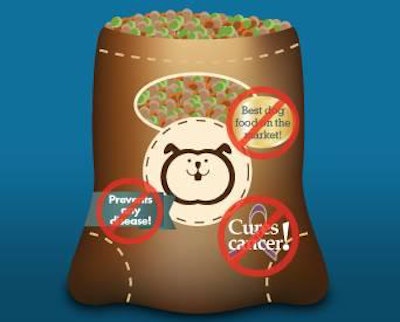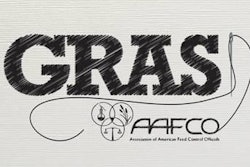
While the marketing, R&D and regulatory departments within a petfood company share a common goal—to contribute to the success of the company—the respective functions of the first two departments compared to the last often appear diametrically opposed.
In a competitive marketplace, the need to distinguish your products from others is a major key to success. Distinctiveness often is accomplished through the development of formulations using innovative ingredients and/or novel functions for ingredients. Marketing then strives to use words and graphics to convey the benefits of those innovations in a manner that maximizes consumer appeal of the product.
The purpose of regulatory affairs, on the other hand, is to ensure that product formulations, as well as those words and graphics that accompany the products, comply with acceptable regulatory precepts. This function is often viewed by marketing people as needless hindrance of the message they deem essential to sell more product. Semi-joking disparagements such as referring to regulatory affairs as the “Department of Sales Prevention†are not uncommon.
From the regulatory perspective, even the best new ingredient or claim is worthless if it results in a denial of state registration or another enforcement action. Just because a rule seems unnecessarily restrictive—if not downright silly—that does not mean it can be ignored.
What regulatory people often do not fully grasp is the need for marketing to have some creative license to keep ahead of (or at least keep up with) the competition. If left to regulatory personnel alone, the product likely would be sold in a boring, graphic-free bag with just the mandatory label information (carefully reviewed for compliance, of course) and absolutely zero romance copy. Frankly, that doesn’t sell product. There needs to be some means of capturing the consumer’s attention and providing him or her with ample persuasion to purchase—otherwise, you might as well sew a feed tag on a burlap sack and be done with it.
So, the formulation and labeling do need to “push the envelope†if the product is to be successful in the marketplace. How far that envelope is pushed all boils down to risk management.
Any new ingredient or claim constitutes a potential regulatory risk. In this case, the role of regulatory cannot be to totally eliminate all risk but rather to assess the relative risks of various scenarios. Each company has its own degree of risk aversion, but the goal is to balance that risk versus the perceived market benefit.
The organization of the company—particularly in how marketing, R&D and regulatory relate—directly impacts how well the departments interact. In some companies, the typically smaller regulatory department reports directly to marketing. So, while regulatory concerns may be considered, there are no assurances that these concerns will always be heeded. In at least one petfood firm, the head of marketing and the head of regulatory affairs are the same person! This makes it extremely difficult for that person to consider both sides of an issue equally.
Ideally, the marketing and regulatory departments should be separate and distinct so one cannot overrule the other. Both should ultimately report up to a common senior executive who makes the final decisions. It is the responsibility of that executive to weigh the potential risks versus the perceived benefits and act accordingly.
If a product doesn’t sell as well as anticipated, well, it may be hard to say whether a more overt claim or inclusion of a riskier ingredient would have made the difference. More obviously, a pile of objection letters from state feed control officials means you went too far.
Most importantly, whether dealing with a new ingredient or a new claim, regulatory needs to be involved early in the process. Too many times, potential regulatory issues are not considered until a draft label is provided for review, and by then the project’s momentum may take precedence over any issues raised.
The sidebar lists some of the regulatory considerations for both new ingredients and new claims. Of course, some matters may need to be addressed by those outside the regulatory department, such as the costs of incorporating a new ingredient, whether it is feasible to incorporate the ingredient in a particular petfood matrix and how to assess and document benefits.
Admittedly, early participation of regulatory personnel in the marketing and R&D processes may kill some very good concepts. However, that may save the company a lot of time and money that otherwise would have been wasted. Also, regulatory may offer guidance or alternatives that would help R&D focus on attainable marketing goals, also allowing marketing to convey a meaningful message that both appeals to purchasers and is acceptable to regulatory officials.


















